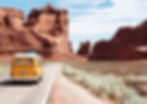
When it comes to travel photography, capturing stunning images is not just about pointing and shooting. The art of composition plays a crucial role in creating visually appealing and impactful photographs. In this blog post, we will explore various techniques and principles that can help you enhance your composition skills and take your travel photography to the next level. 1. Rule of Thirds: One of the most fundamental composition techniques is the rule of thirds. Imagine dividing your frame into a grid of nine equal parts with two horizontal and two vertical lines. The rule of thirds suggests placing your main subject along these lines or at the intersections. This creates a more balanced and visually pleasing composition. For example, if you're photographing a beautiful landscape, try placing the horizon along the lower third line to emphasize the sky or the upper third line to highlight the foreground. 2. Leading Lines: Another powerful composition technique is the use of leading lines. These are lines within the frame that lead the viewer's eye towards the main subject or create a sense of depth. Leading lines can be roads, paths, fences, or even natural elements like rivers or tree branches. For instance, if you're photographing a street scene, use the lines of the road or the buildings to guide the viewer's gaze towards a specific point of interest. 3. Framing: Framing is a technique that involves using elements within the scene to frame your subject. This can add depth and context to your photograph, as well as create a sense of intrigue. Look for natural frames like archways, windows, or tree branches to enhance your composition. For example, if you're photographing a famous landmark, try framing it with a nearby tree or an architectural element to add a unique perspective to your shot. 4. Symmetry and Patterns: Symmetry and patterns can create visually striking compositions. Look for symmetrical elements in your surroundings, such as buildings, bridges, or reflections, and use them to create a balanced composition. Patterns, whether natural or man-made, can also add interest and texture to your photographs. For instance, if you're photographing a row of colorful houses, try capturing them from a frontal perspective to highlight their symmetry and vibrant colors. 5. Storytelling through Composition: Composition is not just about creating aesthetically pleasing images; it is also a powerful tool for storytelling. The arrangement of elements within your frame can convey a narrative or evoke emotions in the viewer. For example, if you're photographing a bustling market, focus on capturing the interactions between people, the vibrant colors of the produce, and the overall atmosphere to tell the story of the place. Remember, these composition techniques are not strict rules but rather guidelines to help you create visually appealing and impactful travel photographs. Experiment with different techniques, practice, and trust your creative instincts. The more you practice, the more you will develop your own unique style and vision as a travel photographer. So, the next time you embark on a travel adventure, keep these composition techniques in mind and let your creativity soar. Happy shooting! We hope you found these tips helpful. Stay tuned for more travel and photography advice from Tippy Trips.

